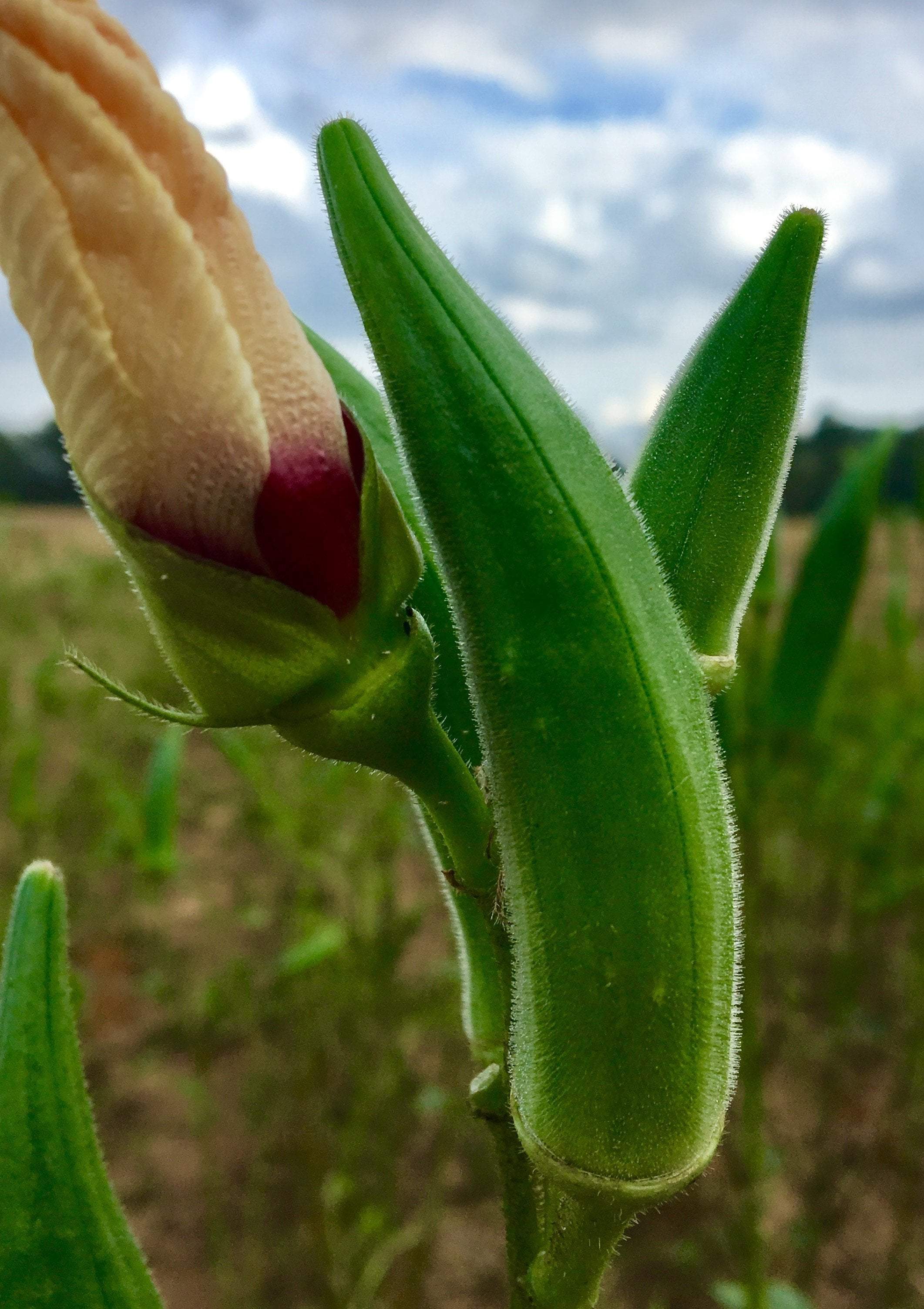
Okra, Abelmoschus esculentus, is a traditional southern food with roots in northeast Africa. There is a reference to it from way back in 1216, by a Spanish Moor upon his visit to Egypt. Cleopatra was known to enjoy eating it. It was introduced to Brazil in the 1600s and was probably brought to this country by French colonists or slaves to Louisiana. Today it is a typical ingredient of Cajun and Creole dishes.
Most people know okra as a southern battered and deep fried delicacy, but it is so much more than that. It is a versatile vegetable that can be eaten raw, boiled, stewed, fried, browned, incorporated into soups, pickled and used in salads.
Fresh okra is hard to find in stores because the outside of the pod will begin to blacken within a day or two of harvesting. It can still be eaten (best cooked at that point, not raw) but it’s visual appeal goes down. This makes it too perishable for supermarkets (but not farmer’s markets). The best way to get it fresh is to grow it yourself.
Okra is in the mallow family, which also includes cotton, hollyhocks and hibiscus. The okra flowers are among the most beautiful of vegetable flowers, similar to a hibiscus. The leaves of the plant can be eaten as greens. It is one of the vegetables that grows very well in the heat of the summer.

Okra likes fertile, well-composted soil and needs moisture and warmth to thrive. Plant it when the nights stay above 55 degrees and the soil has warmed to 65 degrees (F). That’s right now in Western North Carolina.
Soak seeds overnight before directly sowing into warm soil. If you grow it in trays to start, be careful not to damage the roots during transplanting. It typically has no problems with disease or pests but it is sensitive to cold temperatures. Plant the seeds 1/2″ deep and 18″ apart in full sun. You can plant closer together but you’ll get less branching and fewer pods per plant that way. They grow 4′ to 6′ tall and will start producing pods in 60 to 85 days.
Okra easily cross-pollinates so if you are planning to save seed, plant only one variety or separate the crops by up to one mile.
To have good okra production throughout the summer, pick the pods frequently and keep the plants watered. Top dress them halfway through the season. It takes only 3 or 4 days from when the flower opens until the pod reaches harvest maturity, about 2 to 4 inches (though some stay tender at larger sizes). Fully mature okra is used to make rope and paper so you know it’s going to be too tough to eat. I’ve heard you can test it by snapping off the tip of the pod. If it snaps cleanly and crisply, it has not yet become fibrous.
Pick it almost every day if you can. Refrigerate right away for use within a couple of days. It freezes, cans and dries well too. During the civil war okra seeds were toasted and ground for a coffee substitute. I’d like to try that.
Okra is a good source of vitamin C and A, also B complex vitamins, iron and calcium. It is low in calories, a good source of dietary fiber, and is fat-free.

My favorite way to eat freshly picked bright green okra pods is sliced and browned in olive oil in a cast iron skillet. When browning it starts out crisp, gets slimy and then the slime disappears. So cook it long and hot enough to get to that point. Simple, sublime and not slimy. When using for soups and stew, the slime factor works to your advantage, thickening up the broth. Just make sure the recipe has enough water in it to thicken without clumping.
The 10 best okra recipes from Southern Living Magazine including: fried pecan okra, peppery grilled okra, creole shrimp and okra hush puppies, pickled okra and baked polenta with cheese and okra. Yum!
| |
Article Written by: Angie Lavezzo |
|
About the Author: Angie Lavezzo is the former general manager of Sow True Seed. Beyond her professional role at Sow True, Angie's passion for gardening extends into personal hands-on experience, fostering plants and reaping bountiful harvests. |


